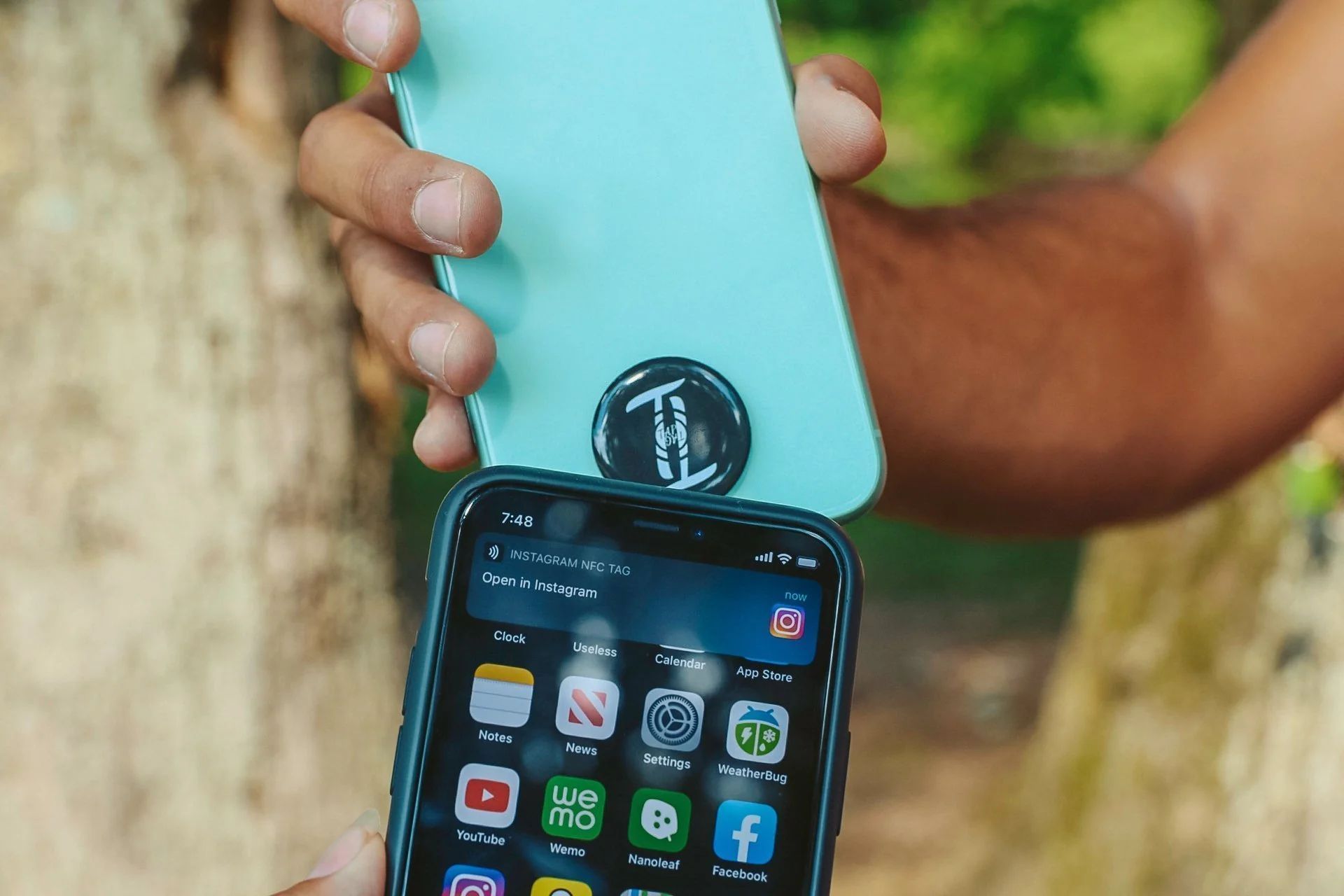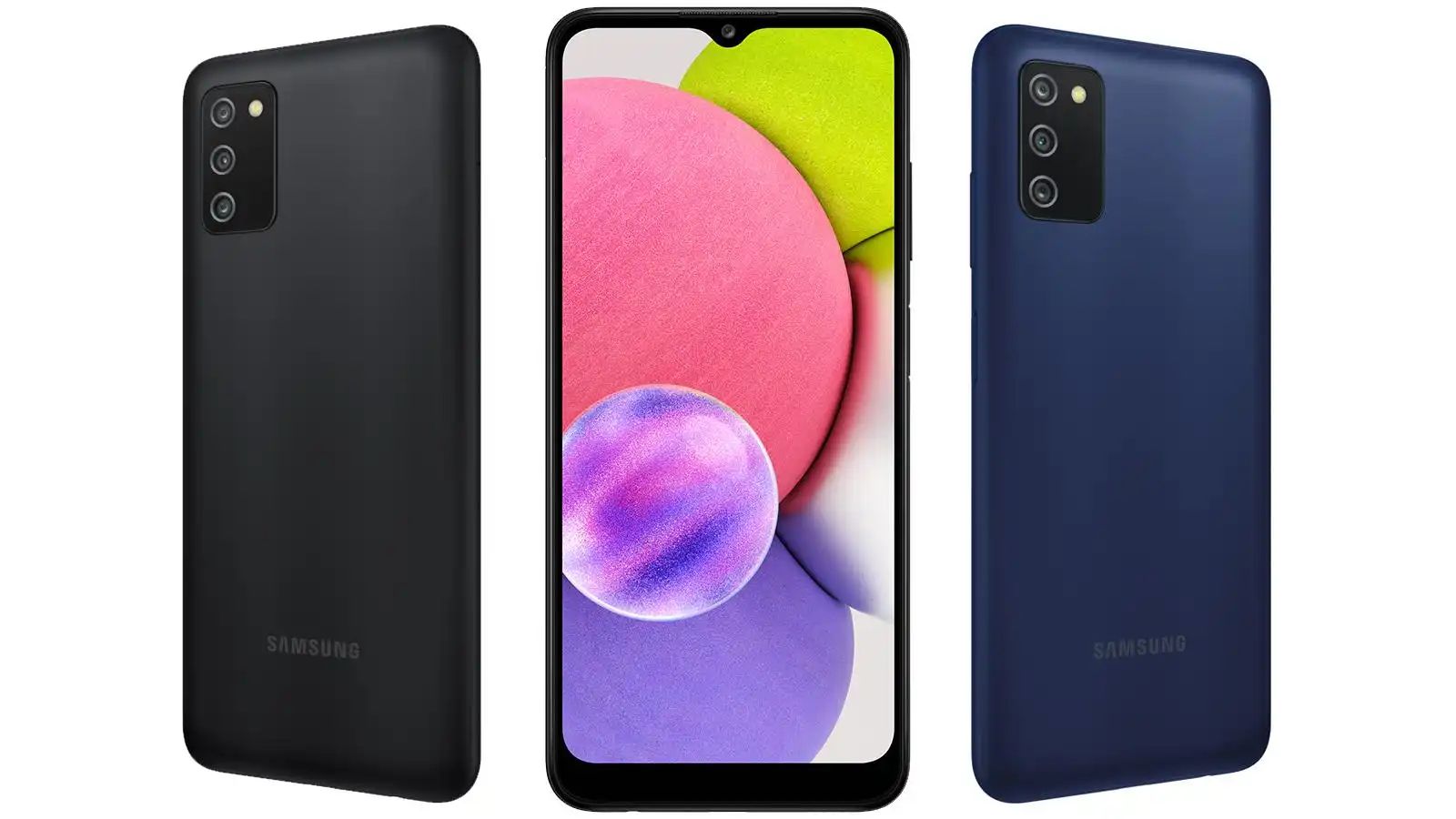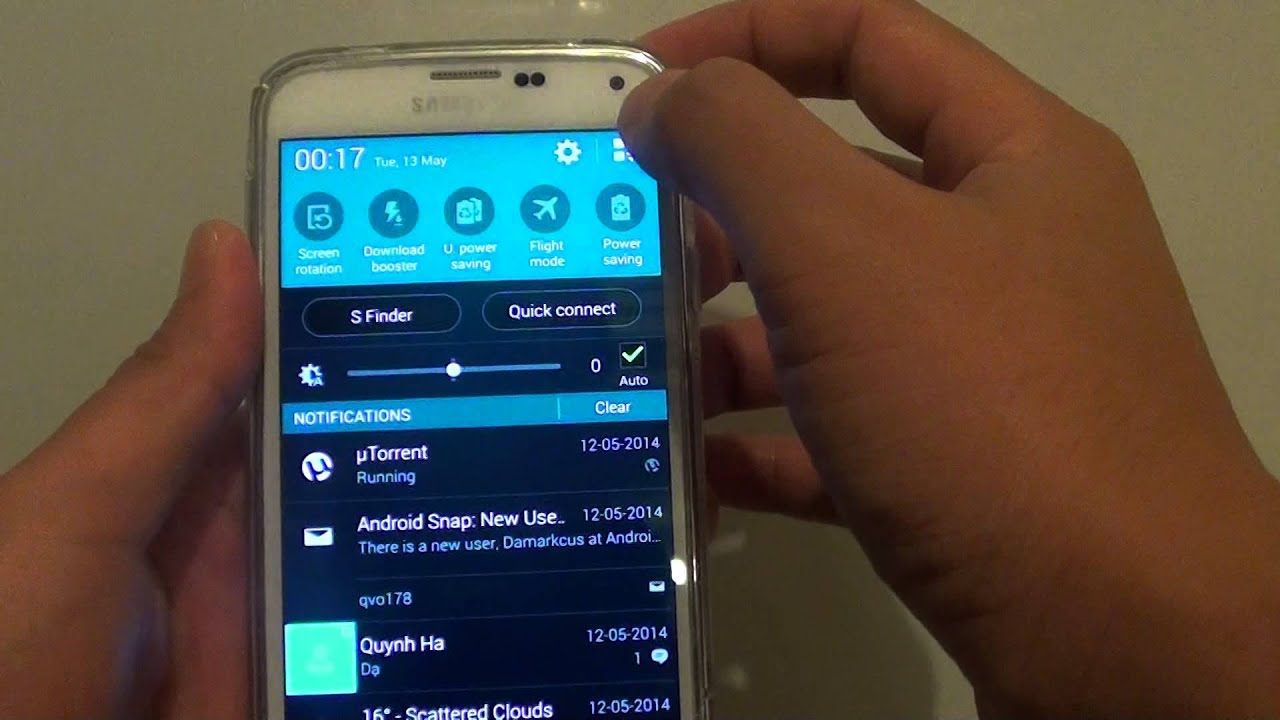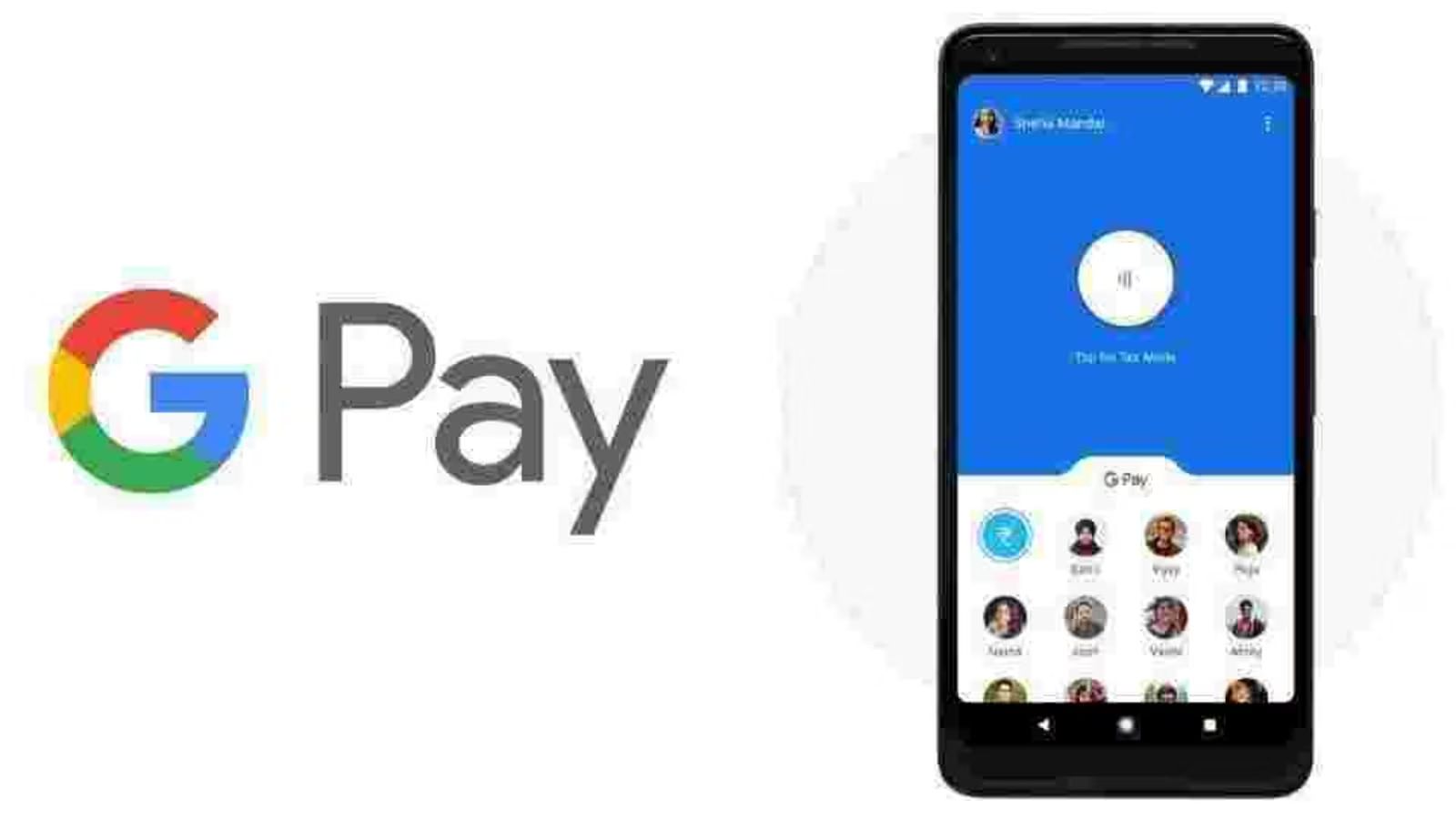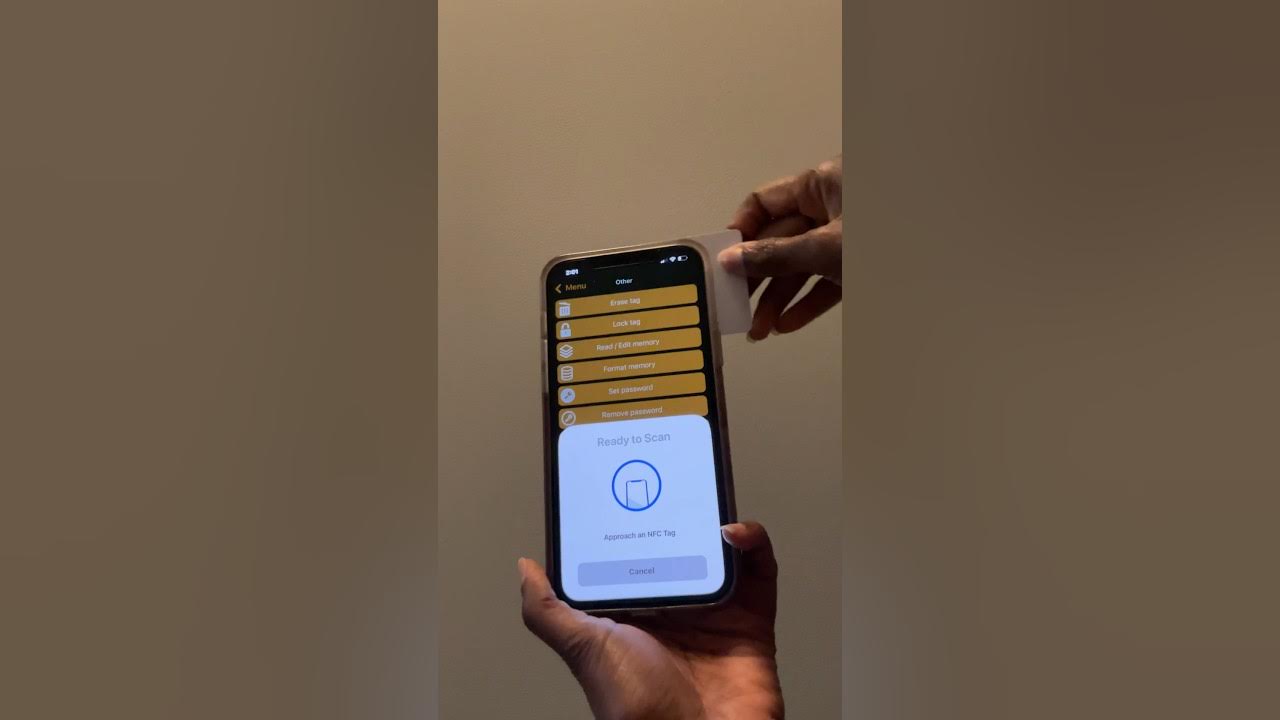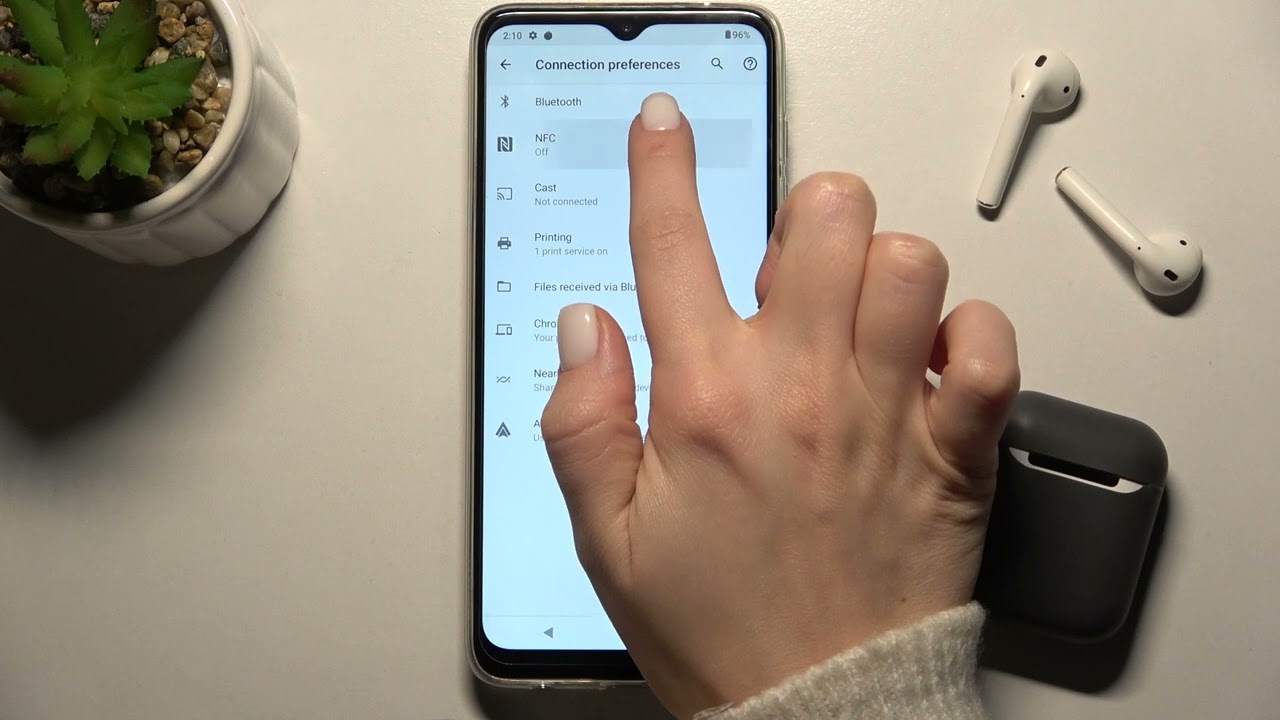Introduction
Mobile phones have become an indispensable part of our lives, serving as our personal assistants, communication devices, and entertainment centers. With each passing day, technology continues to evolve, introducing new features and functionalities. One such feature that you may have noticed on your smartphone is the NFC icon.
NFC, which stands for Near Field Communication, is a technology that allows devices in close proximity to communicate with each other wirelessly. It enables quick and convenient data transfer between two devices by simply bringing them close together. The NFC icon serves as a visual indicator that this technology is available on your phone.
In this article, we will delve deeper into the world of NFC, exploring what it is, how it works, and the benefits it offers. Additionally, we will discuss some common uses of NFC on smartphones, how to turn it on or off, and address any security concerns associated with this technology.
NFC technology has revolutionized the way we interact with our devices, making our lives more seamless and connected. Whether it’s making payments with a tap, sharing files effortlessly, or connecting to a smart device, NFC provides a hassle-free and efficient solution. So, without further ado, let’s dive into the world of NFC and unravel the mysteries behind the icon on your phone.
What is NFC?
NFC, or Near Field Communication, is a short-range wireless communication technology that allows devices to share information when they are in close proximity to each other. It is an extension of radio frequency identification (RFID) technology and operates on the same frequency of 13.56 MHz. NFC-enabled devices can establish communication by simply bringing them within a few centimeters of each other. This technology creates a seamless and convenient means of data transfer between devices without the need for complex setups or configurations.
NFC functions in two modes: active and passive. In active mode, both devices involved in the communication process generate their own electromagnetic fields. This enables peer-to-peer communication, where devices can exchange data back and forth. In passive mode, one device generates an electromagnetic field while the other uses that field for communication. This mode is often used for contactless transactions, such as making payments with a smartphone.
NFC technology relies on two essential components: the NFC tag and the NFC reader. The NFC tag is a small chip that is embedded into objects or devices, such as payment cards, posters, or smart devices. It contains information that can be read by an NFC reader. The NFC reader, typically found in smartphones and other compatible devices, is responsible for communicating with the NFC tag and initiating data transfer.
Unlike Bluetooth or Wi-Fi, NFC has a limited range, typically up to 4 centimeters. This short range ensures that communication occurs securely and helps prevent unintentional interference from external devices. It also contributes to the efficiency of NFC, as devices can quickly establish a connection by simply bringing them close together.
Overall, NFC technology provides a convenient and reliable method for wireless communication between devices. Its simplicity and ease of use make it an ideal choice for a wide range of applications, including contactless payments, file sharing, and device pairing. Now that you have a better understanding of what NFC is, let’s explore how it actually works in the next section.
How does NFC work?
NFC technology operates based on electromagnetic induction principles. It requires two NFC-enabled devices, one acting as the transmitter and the other as the receiver. When the devices are brought into close proximity, the NFC chip inside each device is activated, and communication can begin.
NFC uses magnetic field induction to establish a connection between the devices. The transmitting device creates a magnetic field, which induces an electric current in the receiving device’s NFC chip. This current allows the devices to exchange data by modulating the magnetic field.
There are three modes of NFC communication: reader/writer mode, peer-to-peer mode, and card emulation mode.
In reader/writer mode, one device acts as the initiator, called the reader, and the other device acts as the target, known as the writer. The reader sends a request to read or write data to the writer, which then responds accordingly. This mode is commonly used in contactless payments and access control systems. For example, when you tap your phone on a contactless payment terminal, the terminal acts as the reader and your phone acts as the writer, exchanging payment information in a secure manner.
In peer-to-peer mode, both devices have equal capabilities and can send and receive data simultaneously. This mode allows for seamless data transfer between devices. For instance, you can share files, contacts, or even initiate multiplayer gaming sessions by simply tapping two NFC-enabled devices together.
In card emulation mode, the NFC-enabled device acts as a contactless smart card. This mode is widely used for mobile payments, where the device emulates a traditional payment card, allowing users to make secure transactions by tapping their phones on compatible payment terminals. The device emulates the card’s data and communicates with the payment terminal, providing a convenient and secure payment method.
NFC technology is not only limited to smartphones. It is also incorporated into various other devices, such as tablets, smartwatches, and even some credit cards. The versatility and simplicity of NFC make it an ideal choice for a wide range of applications, promoting seamless connectivity and enhancing user experience.
Now that we have covered the basics of how NFC works, let’s explore the numerous benefits that this technology offers in the next section.
Benefits of NFC technology
NFC technology brings a multitude of benefits to users, making our lives more convenient and connected. Here are some key advantages of NFC:
1. Effortless Communication: NFC allows for seamless communication between devices, eliminating the need for complex pairing procedures or manual configurations. By simply bringing two NFC-enabled devices close together, they can quickly establish a connection and exchange data.
2. Contactless Payments: One of the most popular uses of NFC technology is for contactless payments. NFC-enabled smartphones can act as digital wallets, allowing users to make secure transactions by tapping their phones on payment terminals. This eliminates the need for physical cards or cash, providing a convenient and secure payment method.
3. Easy File Sharing: NFC simplifies the process of sharing files between devices. Whether it’s photos, videos, or documents, users can quickly transfer content between two NFC-enabled devices by simply tapping them together. This makes sharing files with friends, colleagues, or family members effortless and efficient.
4. Seamless Device Pairing: NFC streamlines the process of pairing devices, such as smartphones and Bluetooth speakers, or smartphones and smartwatches. With NFC, users can quickly establish a connection by bringing the devices close together, allowing for hassle-free device pairing and enhancing user experience.
5. Smart Home Integration: NFC technology can be used to integrate smartphones with smart home devices. By tapping the phone on an NFC-enabled smart home hub or device, users can automate tasks, such as turning on lights, adjusting thermostats, or controlling home security systems.
6. Enhanced Loyalty Programs: NFC-enabled smartphones can store loyalty card information, allowing users to simply tap their phones at participating stores to earn rewards or redeem offers. This eliminates the need for carrying physical loyalty cards and provides a seamless experience for customers.
7. Improved Healthcare: NFC technology has found applications in healthcare, enabling patients to easily access medical records, schedule appointments, and share information with healthcare providers. It promotes efficient healthcare delivery and improves patient care.
8. Secure Transactions: NFC technology incorporates various security measures, such as encryption and authentication protocols, to ensure secure transactions. This makes NFC an ideal choice for contactless payments and other sensitive applications, providing users with peace of mind.
These are just a few examples of the benefits that NFC technology brings to the table. As the technology continues to evolve, we can expect even more innovative applications and enhanced user experiences in the future.
Common uses of NFC on smartphones
NFC technology has become increasingly prevalent in smartphones, opening up a wide range of possibilities for users. Here are some common uses of NFC on smartphones:
1. Contactless Payments: One of the most popular uses of NFC on smartphones is for contactless payments. By linking your payment card to a mobile wallet app, you can make secure and convenient transactions by simply tapping your phone on compatible payment terminals.
2. Mobile Ticketing: NFC-enabled smartphones can replace physical tickets for events or transportation. Users can store their tickets on their smartphones and easily access them by tapping the device at ticketing gates or scanners.
3. Smart Access Control: NFC technology allows smartphones to act as access cards, granting users the ability to unlock doors or access secure areas just by tapping their phones on compatible access control panels.
4. Transfer of Files and Data: NFC makes it easy to share files, photos, videos, and other data between smartphones. By simply tapping two NFC-enabled devices together, users can quickly transfer content without the need for additional cables or complicated setup processes.
5. Automated Device Pairing: NFC simplifies the process of pairing smartphones with other devices, such as Bluetooth speakers, smartwatches, or headphones. By tapping your phone on a compatible device, the two devices can automatically establish a connection, saving you time and effort.
6. Smart Home Control: NFC technology can be used to control smart home devices. By tapping your phone on an NFC-enabled hub or device, you can easily adjust smart lights, change thermostat settings, or control other connected devices in your home.
7. Information Exchange: NFC enables the exchange of contact information between smartphones. By tapping two devices together, users can quickly share their contact details, making it convenient for networking or sharing information with colleagues, friends, or clients.
8. Mobile Loyalty Programs: Many businesses have implemented NFC-based loyalty programs. By tapping your smartphone at participating stores, you can earn rewards points, redeem offers, or receive personalized discounts without the need for physical loyalty cards.
These are just a few examples of the common uses of NFC on smartphones. The versatility and convenience of NFC technology continue to expand, offering users innovative ways to interact with their devices and the world around them.
NFC icons on different smartphone brands
NFC technology has become a standard feature on many smartphones, and various smartphone brands have their own distinct NFC icons to indicate the presence of this technology. Here’s a look at some common NFC icons on different smartphone brands:
1. Apple: On iPhones and other Apple devices, the NFC icon appears as a series of four curved lines, resembling a Wi-Fi symbol, placed horizontally. It is usually displayed in the upper part of the screen or the control center. The exact appearance of the icon may vary depending on the iOS version and device model.
2. Samsung: Samsung smartphones feature an NFC icon that consists of an N with a Wi-Fi symbol attached to it. It is usually displayed in the status bar or the quick settings panel and changes color when NFC is active and connected.
3. Google Pixel: Google Pixel devices have an NFC icon that appears as a diagonal line intersecting a smaller horizontal line within a circle. It is typically displayed in the status bar or the quick settings panel.
4. OnePlus: OnePlus smartphones have an NFC icon that resembles a Wi-Fi symbol, with a small wave-like line at the right-hand side. It is usually displayed in the status bar or the quick settings panel when NFC is active.
5. Huawei: Huawei smartphones display an NFC icon that resembles a stylized antenna with curved lines radiating from the top. The icon is usually shown in the status bar or the quick settings panel.
6. Motorola: Motorola devices feature an NFC icon that resembles a Wi-Fi symbol, but with a small curved line at the bottom. It is typically displayed in the status bar or the quick settings panel.
7. LG: LG smartphones display an NFC icon that resembles a Wi-Fi symbol, with curved lines radiating from the center. The icon is typically shown in the status bar or the quick settings panel.
8. Sony: Sony smartphones have an NFC icon that resembles a stylized antenna, with two curved lines extending from the top. It is usually displayed in the status bar or the quick settings panel.
It’s important to note that the exact appearance and placement of the NFC icon may vary slightly depending on the smartphone model, operating system version, and any custom user interface overlays provided by the manufacturer. However, most smartphone brands maintain consistency in the design and placement of the NFC icon across their devices.
How to turn on/off NFC on your phone
Enabling or disabling NFC on your smartphone is a straightforward process. Here’s a general guide on how to turn on or off NFC on different smartphone platforms:
Android:
1. Go to the Settings app on your Android device. You can typically find the Settings icon in the app drawer or by swiping down from the notification shade and tapping the gear-shaped icon.
2. Scroll down and look for the “Connections” or “Network & Internet” section.
3. Within this section, you should find an option called “NFC” or “NFC and payment”. Tap on it to access the NFC settings.
4. On the NFC settings page, you can toggle the switch to turn NFC on or off.
iOS (iPhone):
1. Open the Settings app on your iPhone. You can find the Settings app on your home screen.
2. Scroll down and tap on “Touch ID & Passcode” or “Face ID & Passcode” (depending on your iPhone model).
3. If prompted, enter your passcode or use Touch ID/Face ID to authenticate.
4. Look for the option called “NFC” and toggle (enable or disable) it according to your preference.
Windows Phone:
1. Open the Settings app on your Windows Phone. You can usually find it in the app list or by swiping down from the top of the screen and tapping the gear-shaped icon.
2. Scroll down and tap on “Network & wireless” or “Network & internet”.
3. Within this section, look for an option named “NFC” or “Tap+send”. Tap on it to access the NFC settings.
4. On the NFC settings page, you can toggle the switch to turn NFC on or off.
It’s important to note that the exact steps and the terminology used in the settings may vary slightly depending on the smartphone model and the version of the operating system. However, most smartphones have a dedicated section in the settings menu where users can easily enable or disable NFC functionality.
Once NFC is turned on, you can begin utilizing its features, such as making contactless payments, transferring files, or connecting to other NFC-enabled devices. If you’re not actively using NFC, it’s recommended to disable it to conserve battery life.
Android Beam: Sharing content with NFC
Android Beam is a feature that allows you to share various types of content, such as photos, videos, contacts, web pages, and more, between two NFC-enabled Android devices. It utilizes NFC technology to establish a connection between the devices and enables quick and convenient content sharing. Here’s how to use Android Beam to share content with NFC:
1. Ensure NFC and Android Beam are enabled: Before you can use Android Beam, make sure that both NFC and Android Beam are turned on. You can do this by going to the Settings app on your Android device, selecting “Connections” or “Network & internet,” and navigating to the NFC settings. Toggle the NFC and Android Beam switches to the on position if they are not already enabled.
2. Prepare the content for sharing: Open the app or file that contains the content you want to share. For example, if you want to share a photo, open the Gallery app. If you want to share a web page, open your web browser. Android Beam is compatible with various apps that support sharing functionality.
3. Initiate the sharing process: Once you have the content ready, hold the back of your device against the back of the receiving device. Ensure that the NFC antennas of both devices are aligned.
4. Tap the screen: When the devices are in contact, you will feel a vibration or hear a sound indicating that the NFC connection has been established. On your device, a sharing screen will appear, showing a preview of the content you are about to share.
5. Confirm the sharing: On the sharing screen, review the content you wish to share, and if everything looks correct, tap the “Touch to Beam” or similar button to initiate the transfer. Your device will send the content via NFC to the receiving device.
6. Receive the content: On the receiving device, a notification will appear, indicating that a file or content is being received. Simply tap on the notification to open and access the transferred content.
Android Beam utilizes NFC technology to quickly transfer content between devices. It provides a seamless and effortless way to share files, photos, videos, and other information with friends, family, or colleagues, without the need for additional cables or complicated setup procedures.
Please note that certain devices or Android versions may have slight variations in the user interface or the location of the settings. However, the general steps for using Android Beam remain consistent across Android devices. Enjoy the convenience of content sharing with Android Beam and NFC technology!
Security concerns with NFC technology
While NFC technology offers numerous benefits and convenience, it is essential to be aware of potential security concerns. As with any wireless communication technology, NFC carries certain risks. Here are some key security concerns associated with NFC technology:
1. Data interception: NFC operates in close proximity, which means that potential attackers can eavesdrop on the communication between devices. Although NFC communication is encrypted, sophisticated hackers may attempt to intercept and decode the transmitted data.
2. Malware propagation: NFC can be used to transfer files and data between devices, which could potentially include malware or malicious code. If a user unknowingly accepts a transfer from an infected device, it could result in the installation of malware on their device.
3. Unauthorized access: NFC-enabled devices can be prone to unauthorized access if the necessary security measures are not in place. For example, if a user’s NFC-enabled device is left unlocked and unattended, an unauthorized person could use another NFC-enabled device to gain access to personal information or perform unauthorized transactions.
4. Counterfeit NFC tags: NFC tags can be replicated or emulated, leading to the possibility of counterfeit tags being used to perform unauthorized actions or deceive users into providing sensitive information.
5. Man-in-the-middle attacks: NFC communication can be vulnerable to man-in-the-middle attacks, where an attacker intercepts and alters the communication between two devices without the users’ knowledge. This can enable attackers to manipulate data or deceive users into performing unintended actions.
6. Social engineering attacks: Attackers may use social engineering techniques to trick users into tapping their devices on malicious NFC tags, which could lead to the installation of malware or the unauthorized collection of personal information.
To mitigate these security concerns, it is essential to follow best practices when using NFC technology:
– Ensure that NFC is only enabled when necessary and disabled when not in use to minimize the risk of unauthorized access.
– Only accept content or initiate transfers with devices and individuals you trust.
– Be cautious when tapping your device on unknown or suspicious NFC tags.
– Keep your device’s software and security updates up to date to protect against known vulnerabilities.
– Install reputable antivirus and anti-malware software on your device to detect and prevent potential threats.
By being mindful of potential security risks and taking proactive measures to protect your device and personal information, you can continue to enjoy the benefits of NFC technology while minimizing the potential impact of security concerns.
Conclusion
NFC technology has undoubtedly transformed the way we interact with our smartphones and other devices. Its ability to quickly establish connections, facilitate contactless payments, and enable seamless data transfer has made our lives more convenient and connected. From sharing files and photos with a simple tap to making secure transactions with our smartphones, NFC has become a ubiquitous feature in the mobile landscape.
In this article, we explored the basics of NFC, understanding how it works and its various applications. We discussed the benefits of NFC technology, such as effortless communication, contactless payments, and easy file sharing. We also delved into common uses of NFC on smartphones, including mobile ticketing, smart home integration, and information exchange.
Additionally, we touched upon the different NFC icons used by various smartphone brands and provided a guide on how to turn on/off NFC on different platforms. We also explored the Android Beam feature, which allows for seamless content sharing with a simple tap.
However, it’s crucial to be aware of the potential security concerns associated with NFC technology, such as data interception, malware propagation, and social engineering attacks. By practicing good security habits and being cautious, users can minimize these risks and enjoy the benefits of NFC technology safely.
As NFC technology continues to evolve, we can expect even more innovative applications and advancements, expanding its capabilities and enhancing user experiences. Whether it’s simplifying everyday tasks, securely making transactions, or connecting our devices seamlessly, NFC is set to play a significant role in the future of mobile technology.
So, the next time you see the NFC icon on your smartphone, remember the untapped potential it holds and embrace the opportunities it presents to connect, share, and streamline your digital journey.









